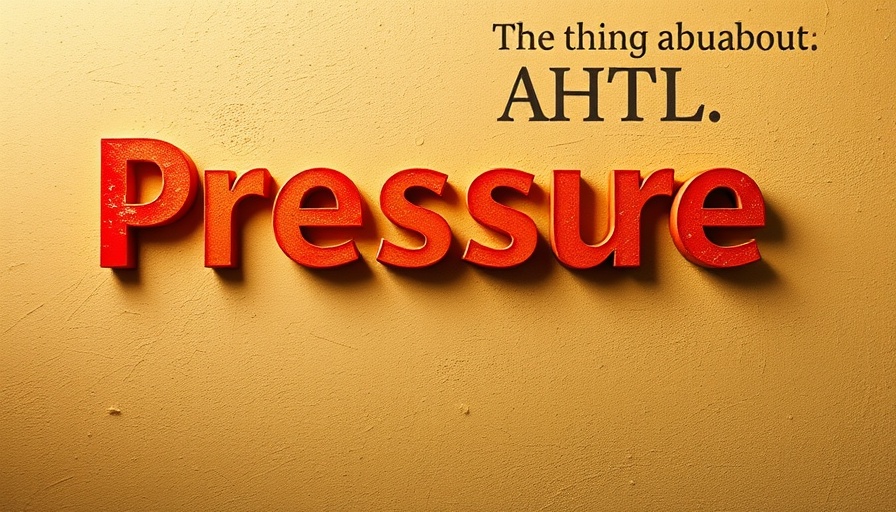
Understanding Pressure: The Slow Build-Up that Transforms
In the world of small and medium-sized businesses, understanding pressure is paramount. It doesn't merely emerge from sudden upheaval; rather, it builds gradually over time, much like the functionality of a pressure cooker. This process of accumulation is essential for cultivating a culture of innovation and adaptability. As businesses face various challenges, recognizing and applying consistent pressure—be it in decision-making or operational strategies—can lead to significant transformations.
The Importance of Consistency in Business Growth
Many avoid pressure due to a perceived discomfort; however, gradual pressure fosters growth and cultural shifts within organizations. According to insights gleaned from studies on cultural change, such as those outlined by Edgar Schein, successful transformations often stem from slow, consistent efforts rather than abrupt changes. Consistent actions create a nurturing environment where change can be absorbed, leading to more resilient organizational practices.
Learning from Cultural Change Experts
As discussed in research about organizational change, businesses often fail to recognize when their culture needs to evolve. Just like the pressure cooker, which takes time to heat and create pressure, organizations need to internalize the need for gradual cultural shifts. Experts emphasize the importance of aligning company values and norms with desired changes to meet contemporary challenges. For instance, if an organization wishes to adopt a new technology, it must build an underlying culture supportive of that change.
Why Organizations Restrain Themselves
Organizations can struggle with implementing necessary cultural transformations due to entrenched beliefs and habitual behaviors. Leaders must recognize that pressure can bring discomfort, which leads to resistance against change. As highlighted in an analysis of case studies like Kodak's failure to adapt to digital photography, understanding the role of cultural inertia is crucial. Just as a familiar environment offers comfort to individuals, so do familiar business practices. Unfortunately, clinging to outdated norms can spell disaster in today’s fast-paced technological landscape.
Countering Resistance: The Role of Leadership
Leadership is instrumental in addressing resistance. A visionary leader must introduce new concepts and ameliorate the fears associated with change. Drawing parallels with successful companies like Netflix, which adapted to consumer needs by evolving its business model, organizations can learn valuable lessons on maintaining a culture flexible enough to embrace change. By fostering an environment where employees feel safe to explore new ideas, businesses can effectively apply gradual pressure to motivate innovation.
Cultivating a Culture of Action
Beyond merely withstanding pressure, businesses should learn to leverage it for growth. Small and medium-sized enterprises can cultivate a culture of sustained action by setting measurable goals and encouraging incremental improvements. Combatting complacency requires clear strategies for change and ongoing communication regarding progress. Without this active participation, employees may feel disconnected and disengaged from the transformation process.
Final Thoughts: Moving Forward Under Pressure
As pressure becomes more pervasive in a competitive business landscape, organizations must learn to channel it into productive action. Consistent efforts toward cultural change are necessary for long-term survival. Embracing pressure as a catalyst for innovation rather than a barrier will empower businesses to adapt and thrive amidst uncertainty. Leaders should champion gradual cultural shifts, reminding their teams that like the gradual heating of a pressure cooker, impactful change is achieved through sustained effort.
 Add Row
Add Row  Add
Add 



Write A Comment